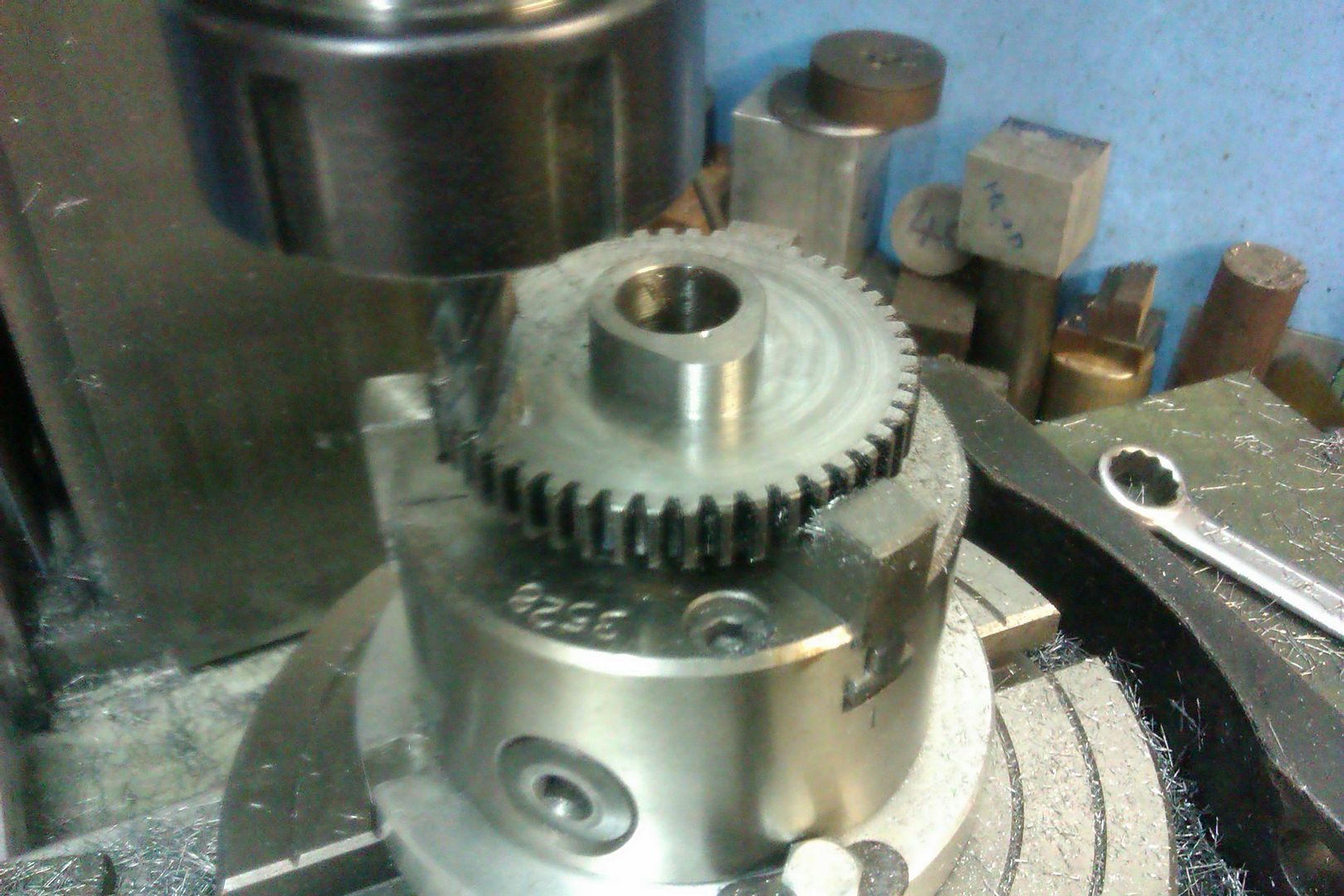Hi Andy,
Just a tip my Father used on many different jobs. His lathe was very old (1920s? - had RH threads for lead and feed screws, etc., not LH like modern machines...). But it had a back gear. So he filed a small sector of mild steel to fit a gear of the back-gear, on a rocker arm, and used this to lock the lathe mainshaft at a certain position, then by indexing to the next tooth etc. he could divide the rotation by the number of teeth on the Back-gear (possibly 60? - I can't remember!). Thus the mainshaft became a dividing head, and he could manually drive a tool (fine-cut) axially along the part - set as a shaper tool would be, and finely cut a cam profile that he wanted for something.
Of course, he had a component with 6 degree cut lines along it, but was very close to the profile and careful filing reached the profile he wanted to a suitable accuracy.
This sort of task can be hugely time consuming, but that's the world that existed "back-then" - People took the time to do things manually because they could, and didn't have machines to speed things up.
To me, modelling often uses the processes we would not find in a "modern workshop" because they didn't exist when the "original" was made... And I doubt you have a lathe with a back-gear? - But can arrange an alternative if this is useful to you?
Anyhow, it was the way he converted the lathe to use it as a dividing head and shaper, which I understand was an early way to make cams, etc.
K2

























































![MeshMagic 3D Free 3D Modeling Software [Download]](https://m.media-amazon.com/images/I/B1U+p8ewjGS._SL500_.png)
















